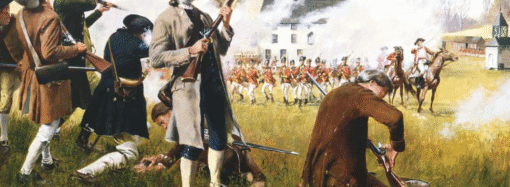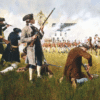This week, an impressive list of scholars across the nation published a letter opposing the new framework for the College Board’s Advanced Placement (AP) exam in U.S. History. You can read the full letter here.
As you may know, millions of U.S. high school students take an AP U.S. History course and exam each year in the hopes of earning college credit. The new framework of the exam is designed to shape the course curriculum.
The scholars’ problems with the new framework include the following:
- It takes away teachers’ previous freedom with the curriculum and “centralizes control, deemphasizes content, and promotes a particular interpretation of American history.”
- The historical view it promotes “downplays American citizenship and American world leadership in favor of a more global and transnational perspective.”
- The framework is organized around the theme of “identity-group conflict… while downplaying essential subjects, such as the sources, meaning, and development of America’s ideals and political institutions, notably the Constitution.”
- It shifts away from the previous framework’s emphasis on American exceptionalism and national character in favor of an emphasis on “the formation of gender, class, racial and ethnic identities.”
Those with similar concerns are often met with the straw man argument that they wish to turn a blind eye to the past sins committed by Americans. Fortunately, the scholars anticipated this argument in their letter:
“We do not seek to reduce the education of our young to the inculcation of fairy tales, or of a simple, whitewashed, heroic, even hagiographical nationalist narrative. Instead, we support a course that fosters informed and reflective civic awareness, while providing a vivid sense of the grandeur and drama of its subject.”
The concerns raised in the scholars’ letter are not new to me. I brought up similar ones in an article last year on Minnesota’s U.S. history standards, which you can read here. I have provided these standards below:
 These are the standards used in Minnesota’s U.S. history classes at all levels. As you read through them, you’ll notice the presence of the same themes that trouble the national group of scholars: American history as one primarily of class and ethnic conflict, and an effort to shift students toward a more global identity.
These are the standards used in Minnesota’s U.S. history classes at all levels. As you read through them, you’ll notice the presence of the same themes that trouble the national group of scholars: American history as one primarily of class and ethnic conflict, and an effort to shift students toward a more global identity.
Personally, I have no idea how you preserve the United States without instilling a good measure of civic pride and identity in its people. These things have always been thought necessary to the survival of modern nation-states. Those who are seeking to do otherwise probably want what never was and never will be.
That said, please don’t mistake me. I’m not for suppressing the perpetration of these themes. I think an open, public debate on the lens through which we should view America is a very good and necessary thing. Let the battle of ideas commence, charitably, and we’ll see whose ideas have the greatest resonance and staying-power.
What I’m against, though, is a public school system that currently has a monopoly on history curriculum—both nationally through the AP exam and at the state-level—and which uses that monopoly to promote a very particular view of American history. The AP exam and the Minnesota standards do not express a presently-held majority consensus about America’s past. What is more, they often promote a particular, critical view of history to students who have not been adequately schooled in the art of historical criticism themselves. In other words, they’re not allowing for a battle of ideas; to use a loaded word, they’re indoctrinating.
In the fifth century, Augustine famously defined a “people” as “a group of rational beings bound together by a common agreement about the objects of their love.” We the people of the United States were originally bound together by a common love of freedom. Right now, this freedom is not being allowed for in the curriculum of American schools that shapes the minds of our youth. As the end of the scholars’ letter reads, “We can, and must, do better.”
















Leave a Comment
Your email address will not be published. Required fields are marked with *